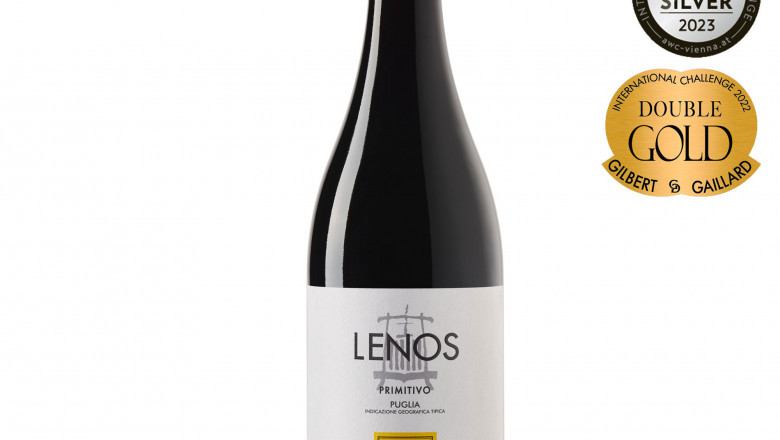views
Primitivo wine is a treasure trove of flavor, history, and culture. A deep red beauty with bold character, this wine has captivated wine lovers for centuries. Whether you’re a seasoned connoisseur or a curious beginner, Primitivo is a must-try for anyone who appreciates robust and full-bodied wines. But what makes Primitivo so special? Let's embark on a journey through the vineyards of Southern Italy to explore its rich heritage, unique characteristics, and the perfect pairings to elevate your experience.
The Origins of Primitivo: A Story Rooted in Time
Primitivo wine has a fascinating history that traces back to ancient times. While it is widely associated with Italy, particularly the Puglia region, its origins stretch beyond the Mediterranean. Research has shown that Primitivo shares its genetic roots with Zinfandel, a grape variety that made its mark in California. Both grapes originate from an old Croatian variety known as Crljenak Kaštelanski, proving that this grape has traveled far and wide before finding its true home in Italy.
The name “Primitivo” itself comes from the Latin word primativus, meaning “early ripening.” True to its name, Primitivo grapes are among the first to be harvested, usually in August, before many other varieties. This early ripening contributes to its intense flavors and deep, rich color.
The Alluring Characteristics of Primitivo Wine
One sip of Primitivo is enough to transport you to the sun-kissed vineyards of Puglia. This wine is known for its deep ruby-red hue, almost bordering on purple, and its bold, fruit-forward profile. Here are some of its most remarkable characteristics:
- Aroma & Bouquet: Primitivo exudes intoxicating aromas of ripe blackberries, dark cherries, plums, and blackcurrants, often intertwined with hints of vanilla, spice, and tobacco.
- Flavor Profile: It is a rich and full-bodied wine with notes of jammy fruits, licorice, dark chocolate, and a touch of peppery spice. The tannins are soft yet firm, making each sip a well-rounded experience.
- Alcohol Content: Primitivo is known for its relatively high alcohol content, typically ranging between 14-16%, giving it a powerful yet smooth finish.
- Aging Potential: While many Primitivo wines are enjoyed young for their vibrant fruitiness, some aged varieties develop deeper complexity with notes of leather, tobacco, and earthiness over time.
Food Pairings: Elevate Your Primitivo Experience
One of the greatest pleasures of wine is how it pairs with food, and Primitivo is no exception. Its robust and fruity profile makes it an excellent companion for a wide range of dishes. Here are some perfect food pairings to bring out the best in this extraordinary wine:
- Hearty Meat Dishes: The bold flavors of Primitivo complement grilled meats, barbecue, slow-cooked stews, and roasted lamb.
- Pasta & Pizza: Traditional Italian dishes like lasagna, spaghetti Bolognese, and wood-fired pizzas with rich tomato-based sauces harmonize beautifully with Primitivo.
- Aged Cheeses: Hard cheeses such as Parmigiano-Reggiano, Pecorino, and aged Gouda enhance the wine’s depth and complexity.
- Dark Chocolate & Desserts: The rich fruitiness of Primitivo pairs wonderfully with high-quality dark chocolate, making for a decadent treat.
Primitivo vs. Zinfandel: What’s the Difference?
Given their genetic connection, Primitivo and Zinfandel share many similarities. However, they also have distinct differences due to their terroir, winemaking techniques, and climate:
- Terroir Influence: Primitivo thrives in the warm, sun-drenched vineyards of Puglia, resulting in a more rustic, earthier profile, whereas Zinfandel, grown primarily in California, is often fruitier with a higher level of spice.
- Alcohol & Acidity: While both are high in alcohol, Primitivo tends to have a slightly more structured acidity, making it more food-friendly.
- Tannin Levels: Primitivo’s tannins are often softer, lending to a smoother mouthfeel compared to some Zinfandels that exhibit more gripping tannins.
How to Best Enjoy Primitivo
To fully appreciate Primitivo’s depth and richness, follow these simple tips:
- Serve at the Right Temperature: Primitivo is best enjoyed at a temperature between 16-18°C (60-65°F). Too warm, and the alcohol may become overwhelming; too cold, and the flavors might be muted.
- Let It Breathe: Decanting the wine for about 30 minutes allows its bold flavors to open up, enhancing your tasting experience.
- Use the Right Glass: A large, round-bowled wine glass helps concentrate its intense aromas, making each sip more enjoyable.
Must-Try Primitivo Wines
There are many exceptional Primitivo wines to explore, but here are a few standout bottles that showcase the best of this variety:
- Primitivo di Manduria DOC – Known for its rich, high-quality expression, often aged to develop more complex flavors.
- Gioia del Colle Primitivo DOC – A more elegant and structured take on Primitivo, often with floral and spice notes.
- Salento IGT Primitivo – A fruit-forward and approachable option, perfect for casual drinking.
Final Thoughts: Why You Need to Try Primitivo
Primitivo is more than just a wine; it’s an experience. With its bold flavors, rich history, and incredible versatility, it has something to offer for every wine lover. Whether you’re enjoying it with a lavish meal, sipping it by the fireplace, or sharing it with friends, Primitivo delivers a truly memorable experience.
So, the next time you’re browsing the wine aisle or planning a dinner party, don’t overlook this Italian gem.






















Comments
0 comment